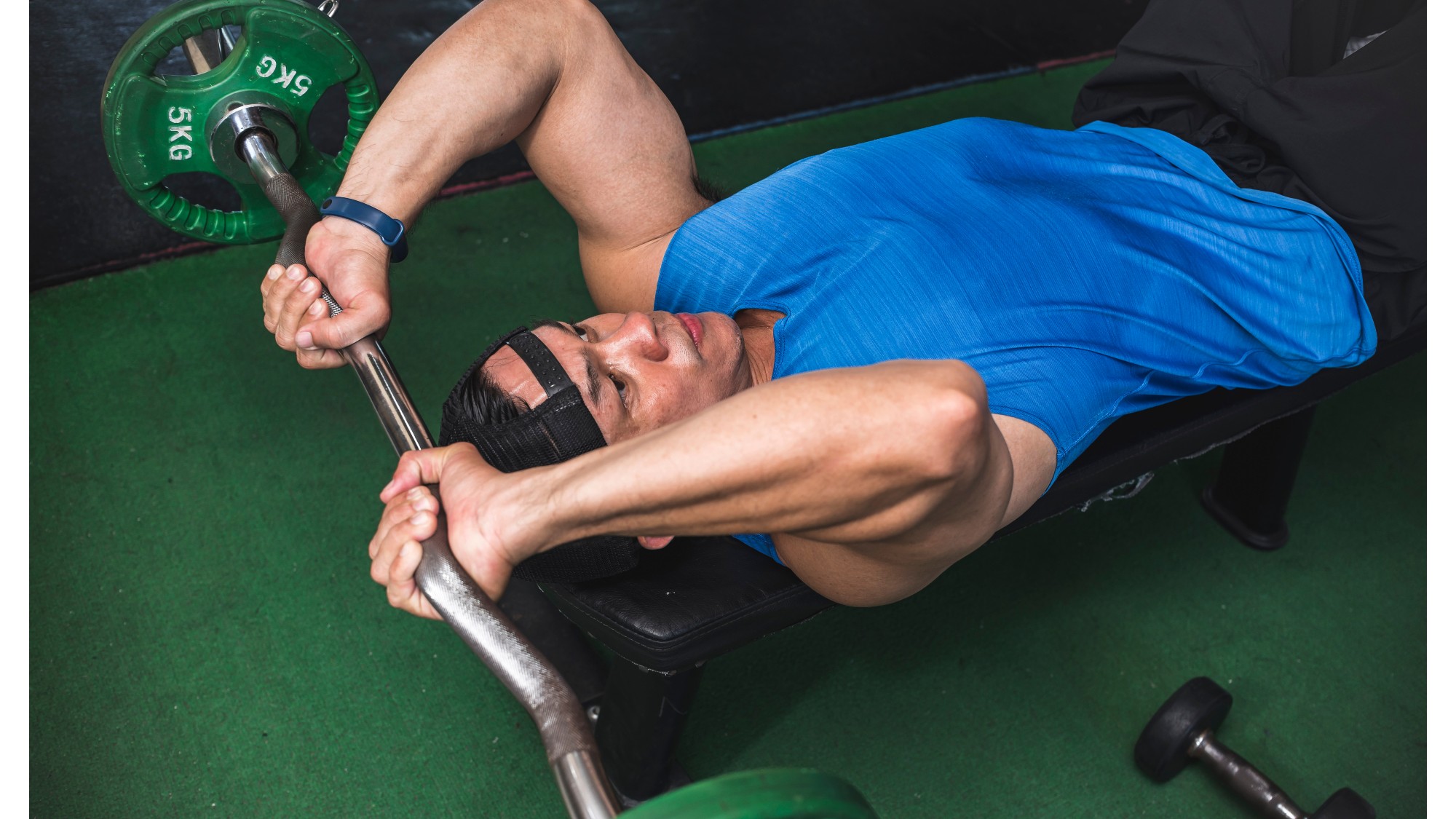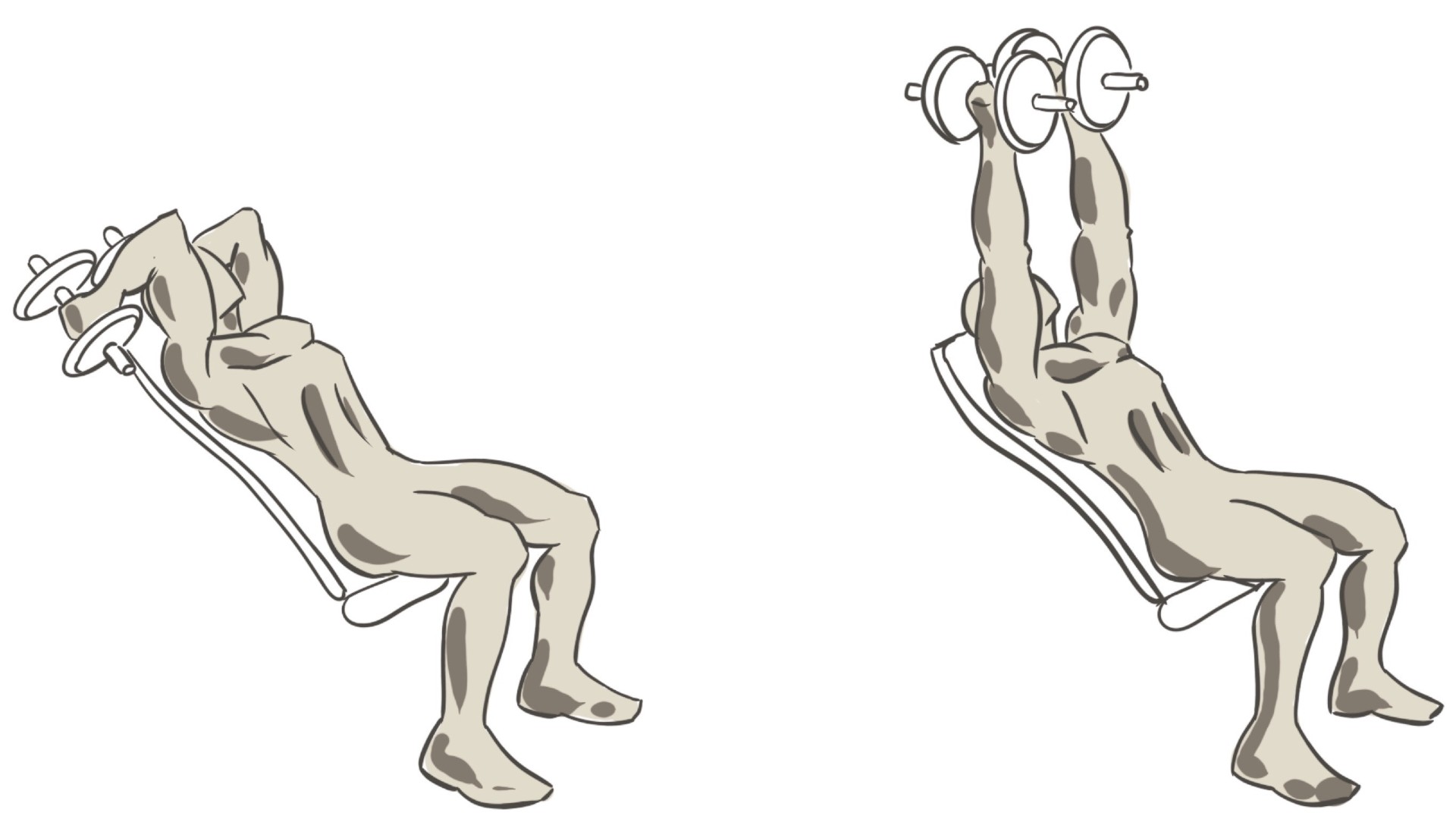
If you dream of toned triceps, you need a reliable arm workout in your arsenal, and skull crushers are a guaranteed tricep torcher. The name hardly sounds inviting, but the skull crusher is a brilliant tricep isolation exercise — as long as you don’t drop the weight on your head, of course.
If you want arms like Thor, maybe consider Chris Hemsworth’s workout, but as an alternative, why not give the skull crusher a go? It even made it into our recent round-up of the 3 best dumbbell workouts for triceps, which is no mean feat.
Your triceps assist in every pushing exercise you do (think push-ups and the bench press), so while you will naturally build tricep strength during workouts, isolation exercises hone in on one muscle group and kick them into gear. I love using them at the end of workouts to work muscles to fatigue.
With that in mind, I decided to challenge myself with 50 skull crushers every day for a week in a bid to test my tricep strength. Here’s what happened.
Barbell skull crushers vs dumbbell skull crushers vs kettlebell skull crushers
When it comes to skull crushers, there is much debate on which weight is better — barbells versus dumbbells versus kettlebells. Personally, I prefer the versatility of dumbbells and kettlebells because beginners can hold one weight in both hands to perform the exercise, and free weights encourage a more natural range of motion (barbells hurt my elbows, but that’s just me).
On the other hand, barbells encourage a strict movement pattern, whereas you are more likely to lose control of dumbbells if you go too heavy. There is nowhere to hide during a dumbbell skull crusher, and your weaker muscles will have to work or drop the weight, which is better for building control and strength. The pendulum continues to swing, but how do you do skull crushers?

How to do skull crushers
Check out our how to do a skull crusher guide; we’ve also included a handy video above. But here’s a quick summary.
Sign up to get the BEST of Tom's Guide direct to your inbox.
Get instant access to breaking news, the hottest reviews, great deals and helpful tips.
- Start by laying on a bench with your feet planted on the floor or bench
- Hold a dumbbell in each hand and lift the dumbbells above your head, ensuring your shoulders, wrists, and elbows are stacked
- Turn your palms to face each other in a neutral grip
- Keep your core locked tight and flatten your back onto the bench
- Slowly bend your elbows and lower the dumbbells either side of your ears
- Keep elbows close to your head and avoid flaring them outward or allowing your weights to travel wide
- Elbows should point forward. Pause, push the weights back up to your starting position, and extend your elbows without fully locking out.
The only movement that should occur is flexion and extension of your elbow and a spicy tricep burn to boot. If you lift too heavy, the dumbbells will travel wide, putting more strain on your joints. You might see keen gym bunnies arching their backs: this is safe if you adopt a small mid-upper arch, but you should maintain a neutral spine and lower back.
I did 50 skull crushers every day for a week — here’s what happened to my triceps
Here's what happened.
Day one
Well, this fitness challenge was fun — said nobody ever. I’ll be adding the skull crusher to my archive of those to block out and never revisit. Rather than racing through 50 reps and being unable to move the next day, I broke the reps up into five sets of 10 reps and opted for two 16lbs dumbbells. And I still couldn’t move the next day.
I recommend using dumbbells for this exercise (as I mentioned above), and you can pick up some of the best adjustable dumbbells here. I attacked the first day with all the gusto of someone who had no idea what was in store. The skull crusher is an epic tricep exercise. But 50 reps are too much, considering it’s an exercise that doesn’t work other muscle groups, and I started to lose my form around the third set.
Days two and three
Days four and five
I noticed that my elbows were starting to flare outwards, and the dumbbells tended to travel wide, which began to hurt my elbows. Admitting defeat, I dropped a few pounds and plowed on, finding it much easier to keep my elbows locked in and perform the exercise through its full range of motion. With my form back on track, I could feel all the work through my triceps, and it kicked up a savage burn.
Day seven
I didn’t notice much change from the start of the week to the end, but this could be because I train regularly and often incorporate tricep extensions into my upper body workouts. However, the first three sets were consistently doable, and the final two had me gritting my teeth and wishing it was all over.
On the final day, I attempted (somewhat tentatively) to retry the 16lbs dumbbells. Surprisingly, they felt more comfortable (just), and I could at least complete one set with good form before dropping back down. And I also noticed my push-up felt less arduous, but this could be because I added this challenge to my existing workout.
A common mistake I notice with the skull crusher is the tendency to overarch the back and flare the ribs, which can lead to nasty lower back injuries. I also see some people power out reps like they’re late for work (maybe they are?) without fully extending the elbow or controlling the movement. So if you plan to give this challenge a go, form is first and foremost.
More from Tom's Guide

Sam Hopes is a level 3 qualified trainer, level 2 reiki practitioner and senior fitness writer at Tom's Guide. She is also currently undertaking her Yoga For Athletes training course. Sam has written for various fitness brands and websites over the years and has experience across brands at Future such as Live Science, Fit&Well, Coach, and T3.
Having worked with fitness studios like F45 and Virgin Active, Sam now primarily teaches outdoor bootcamps, bodyweight, calisthenics and kettlebells. She also coaches mobility and stretching-focused classes several times a week and believes that true strength comes from a holistic approach to training your body.
Sam has completed two mixed doubles Hyrox competitions in London and the Netherlands and finished her first doubles attempt in 1:11.
